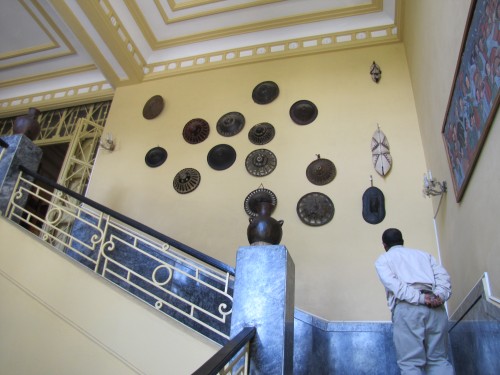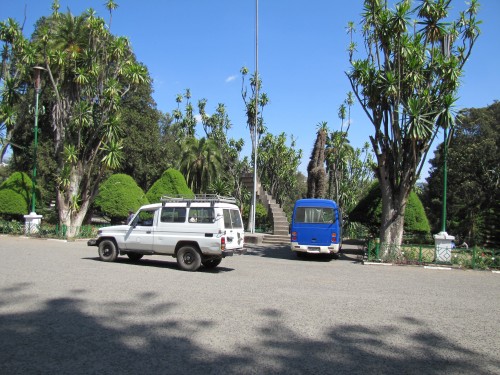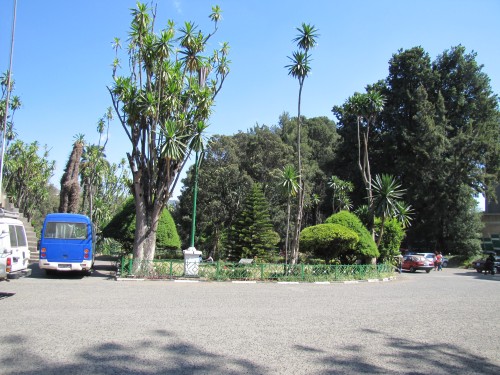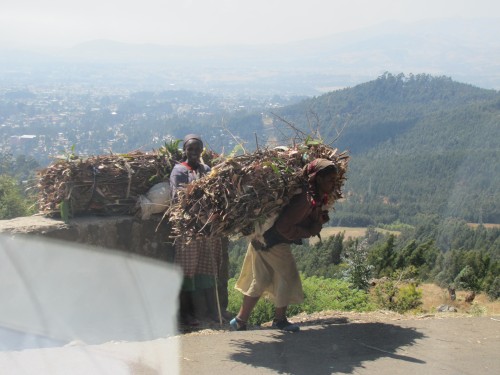Ethnological Museum, Addis Ababa, Ethiopia
On our return from visiting Entoto Natural Park near Addis Ababa we directed our driver to find an art gallery we wanted to visit. With a little difficulty we found the building in a back street, only to find that it had closed some time ago. Our driver suggested a good alternative – the Ethnological Museum.
The above photo shows part of the entrance into the museum, but after that point I was not allowed to take any photos. We found that that museum was a fascinating place to visit and were sorry we only had about an hour to spend there. A whole day visit would be advisable to anyone wishing to see this great display of cultural and artistic aspects of Ethiopia. If that is not possible, even a two or three hours would be recommended.
An very interesting part of the display is the section dedicated to Emperor Hailie Selassi. He used the building as his palace during the time he led the country. I think it is quite fitting to have this building dedicated to his important place in Ethiopian history. Our elderly guide was once a personal servant of the emperor himself.
Addis Ababa University
The old palace and museum is situated in the midst of the Addis Ababa University. While we didn’t explore the grounds of the university, I did take the photos shown below while we were there.
Firewood gatherers, Entoto, Addis Ababa
Poverty is obviously in your face when you visit Ethiopia. Certainly, steps are being made to overcome the abject poverty of so many people in the country, there is still plenty of evidence to show that vast numbers of people are struggling to exist on a daily basis.
One of the more heart wrenching moments during our recent visit was to witness the plight of the women firewood gatherers on Mt Entoto near Addis Ababa. These poor women carry huge bundles of firewood from the forest around the mountain down to the city. The load is more than most people would be capable of carrying, yet these small women, bent over from the sheer weight of their load, probably do this journey daily. In some cases I believe that some of them do the trip several times a day. The income derived from this enterprise barely covers the living expenses of their family.
The encounter made me concerned for their welfare, but I felt extremely helpless.
On a more positive note, there are programmes beginning to emerge to help these hapless women. By giving them alternative means of making an income, some are being freed from what can only be called slavery. One such strategy is mentioned here.





